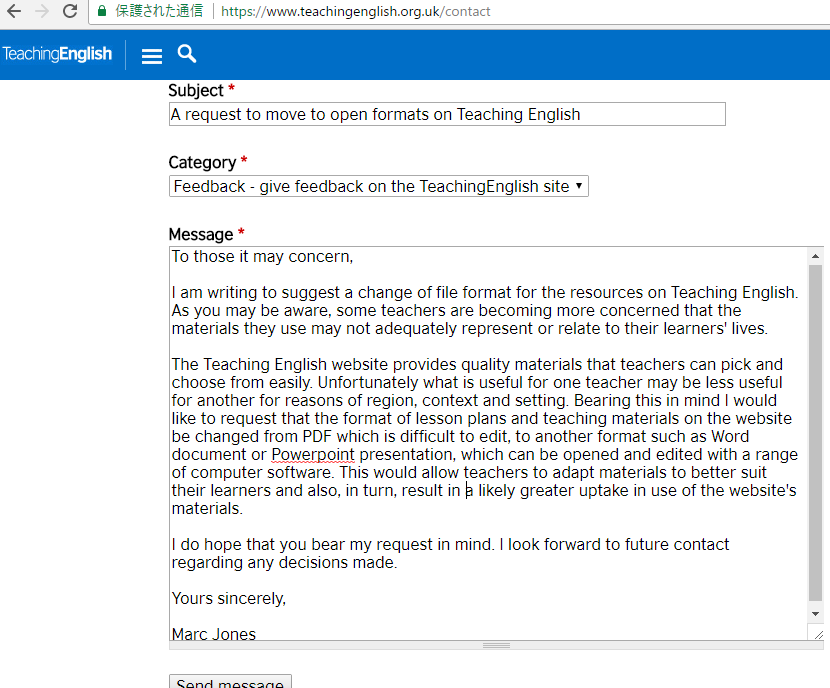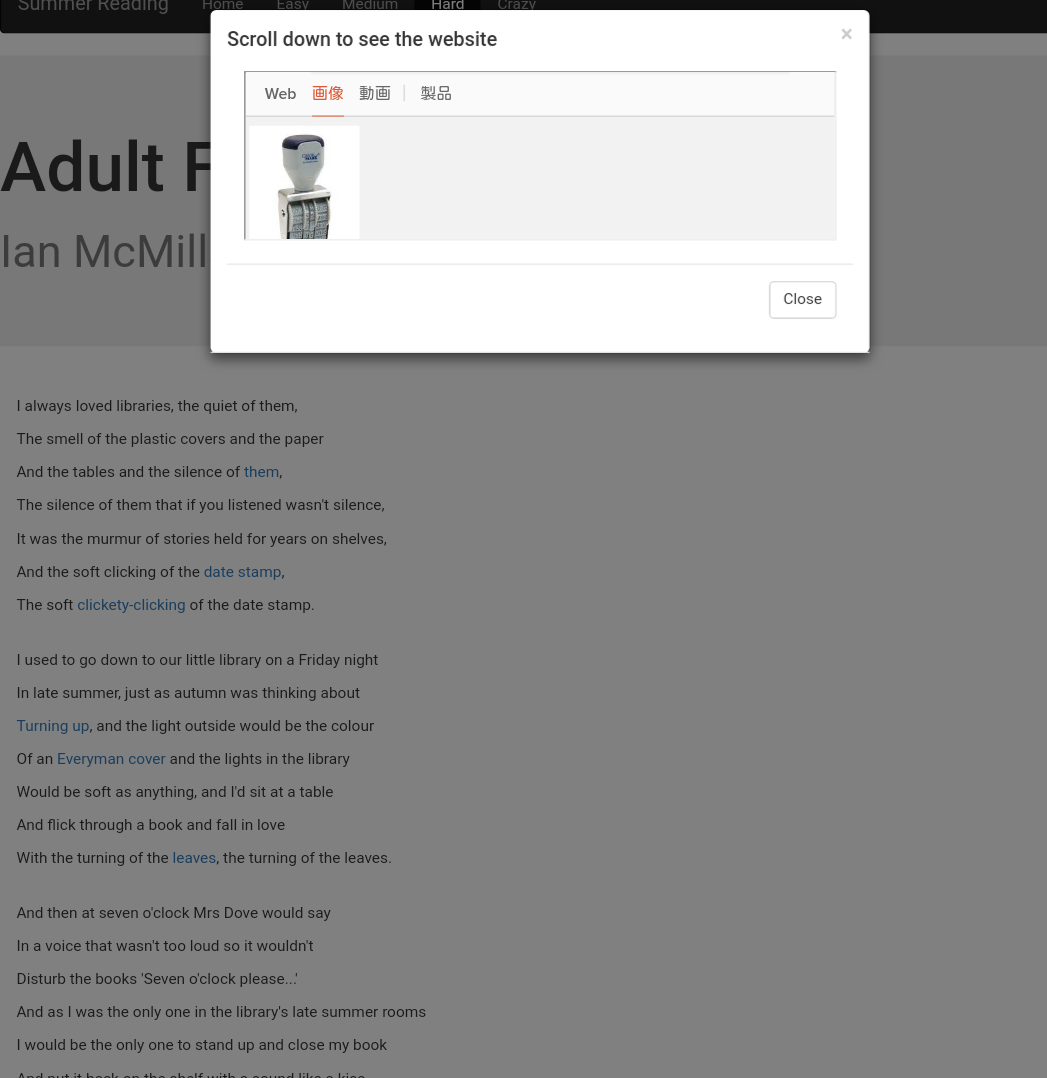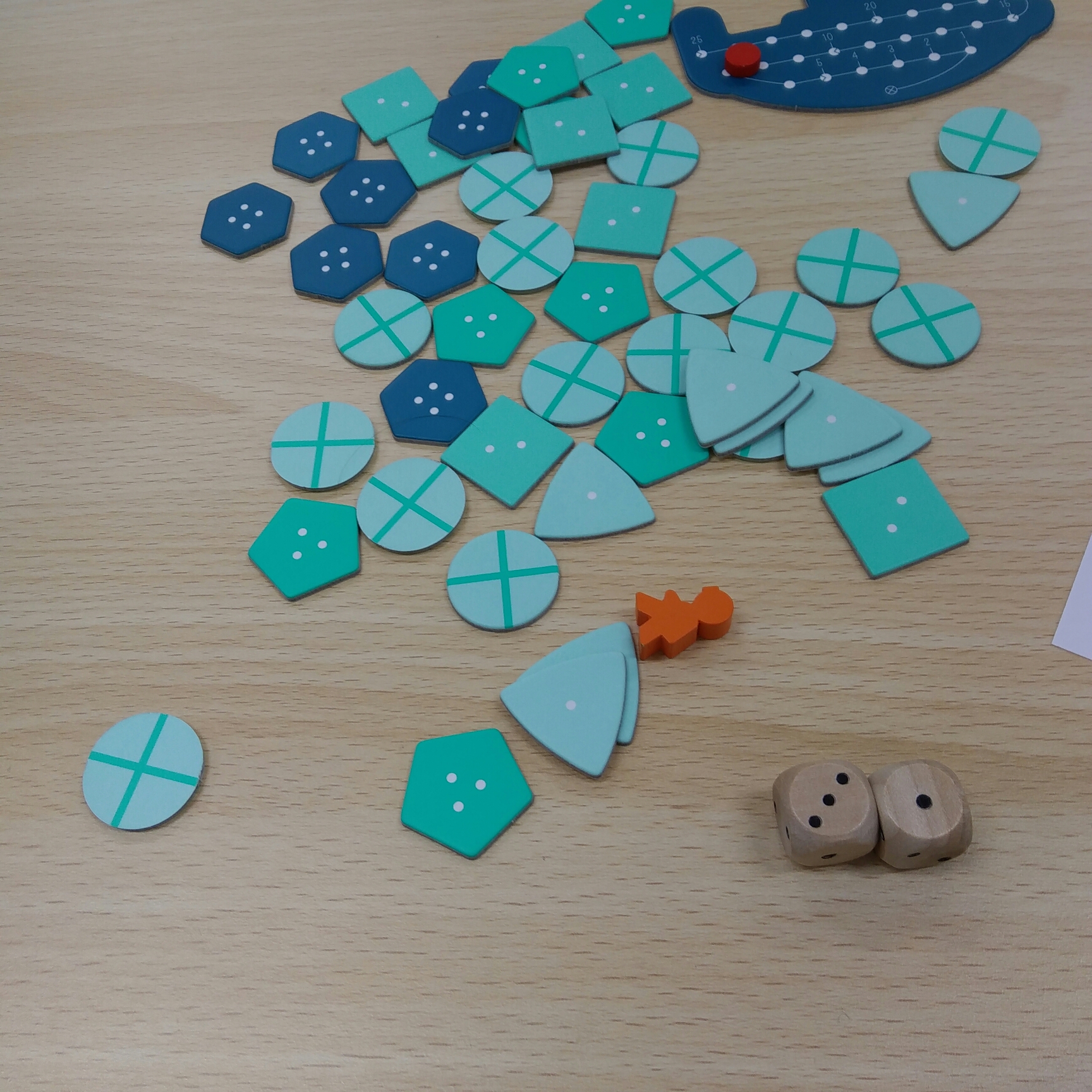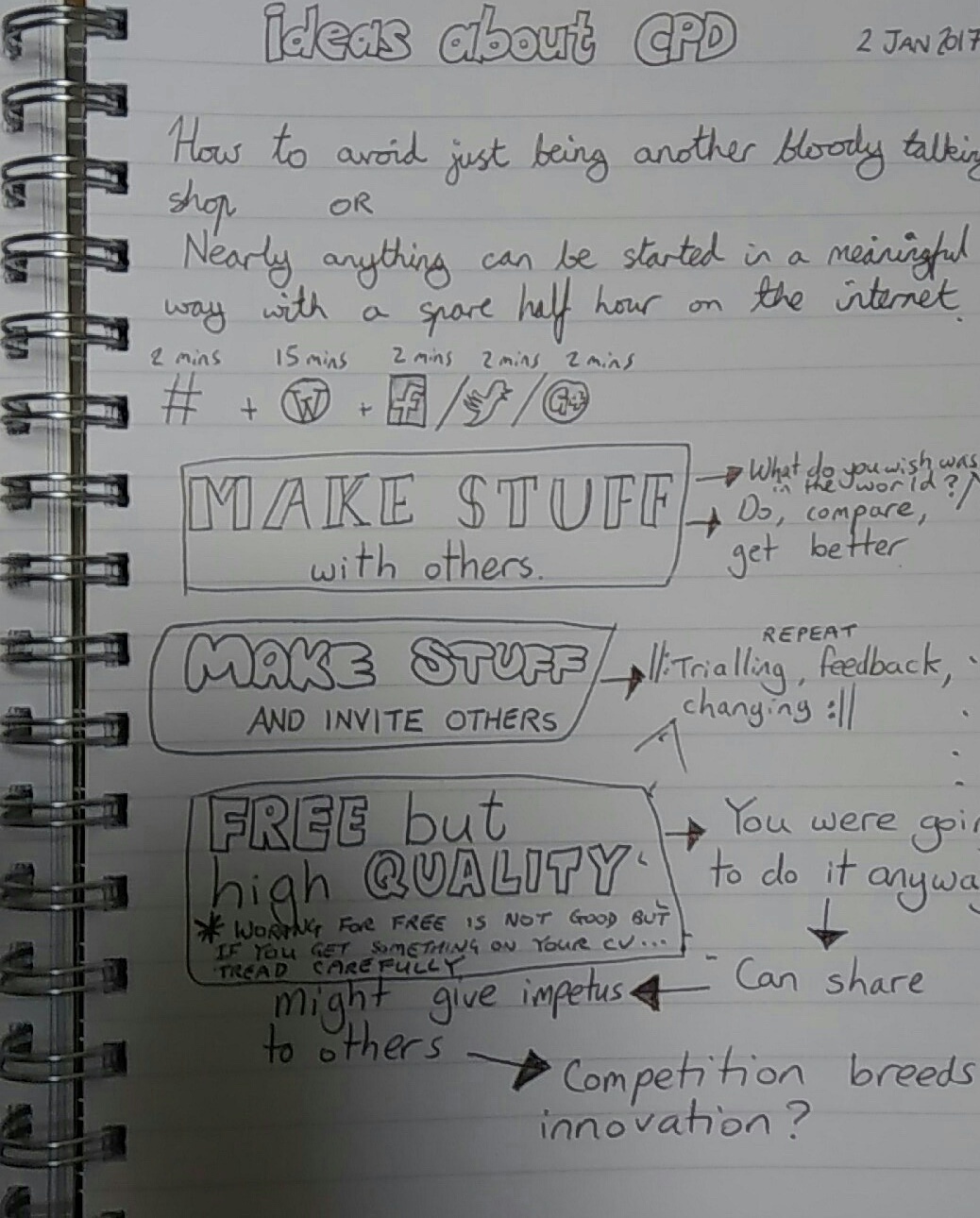I’ve added something to my online Google Drive folder for the first time in ages. It’s a short Focus on Form activity for turning basic recommendations into written recommendations using modal verbs and adverbs. I wrote it for a class at a car seat company, so you might want to edit the Word document.
It is very rough around the edges by design – there is more than one possible correct answer so there is no list of correct answers – you need to check the work yourself or have the learners do it, perhaps peer checking before teacher feedback.
Making Written Recommendations (MS Word, PDF)
Category: Materials
Lesson resource: Night of the Living Dead

I know that Halloween is over a month past. Anyway, I was thinking about authentic, non-copyright texts and I remembered that Night of the Living Dead has never had copyright on it due to a mistake in the original film release. You can download it from The Internet Archive along with subtitles (and if you open the subtitles with a text editor like Notepad or Notepad++, you get yourself a handy script with time codes, although without speaker information).
To save a bit of time, here are some notes I took while I was watching:
10:00 (roughly) Imperatives.
20:00 (roughly) Narratives (Ben tells Barbra what happened, Barbra tells Ben).
36:30 pictorial cues to the next lot of possessions (good for eliciting knowledge of vocab and checking with listening in a minute’s time)
37:25 “I found a gun and some bullets out there. And these. This place… we have a gun and bullets, food and a radio. Sooner or later someone’s bound to get us out.”
40:25 Mr Cooper and Tom enter.
40:45 How long have you been down there?
Conditionals if, when, in case, rhetorical questions, modality will/won’t/can’t/better off. Good for negotiations and making concessions.
48:41 Simple present statements about present state with wasn’t about to mixed in.
50:00 “Does anyone up there know why we’re being attacked?”
“The radio said…” Reporting.
57:40 “The cause… It could be…” /ɪ kʊ biː/
59:40 Locations, possessive for condition.
1:02:40 Possessives. “You can…” for commands.
1:05:00 elision of /d/ in “more and more”
1:05:40 “Where’s that big smile for me?” /weərzat/
1:15:00 “There’s supposed to be a broadcast at 3.”
17:50 “Kill the brain and kill the ghoul.”
1:18:50 Report of killing ghouls. Could be good for a summary.
1:31:20 “We only need a few men to check out the house.”
I hope this is of use to someone. I will probably use it myself at some point, and if noting else, it serves as at least a mental note.
Against the Coursebook Flow for Better Listening
This post is informed by my own research (Jones, 2017), but isn’t exactly part of it. It was partly inspired by a eureka moment at the sink while washing the dishes. I was thinking about coursebooks, and particularly the flow, when the connection came to me. Anyway, more below.

Take a moment to think about how a coursebook lesson flows. No prizes for guessing that it follows PPP. Usually it’s this: Schema activation (recalling and retrieving knowledge about a topic) activity from an image, perhaps some ‘Starter’ questions. Present language, using reading and/or listening text (usually alternating across a unit, with a reading sub-unit and a listening sub-unit). Move on to a grammar exercise or two. Finish with a ‘free’ speaking activity.
I’m going to look at this listening flow. I’m not going to say that schema activation is a waste of time at all but, does it need to be done every time listening is taught? I am going to say no because we don’t always know or have the ability to make reliable predictions about the upcoming content of conversations we are likely to be involved in or overhear. There is also the fact that in a survey I conducted with teachers about what they state their practices and beliefs to be (Jones, 2017), activating schemata massively negatively correlated with teaching bottom-up listening skills. Basically, teachers who say they activate schemata, say they don’t teach bottom-up skills and teachers who say they teach bottom-up skills say they don’t activate schemata. That bottom-up skills are neglected is not a given, however, but it is only the explicitly stated practice of a large minority. So less than half of the teachers I picked up through social media, the freaks who talk about teaching in their free time, teach bottom-up skills explicitly.
Why? “It’s not in the book” actually isn’t the answer. It is usually in the book, but it’s mislabelled as ‘pronunciation’. It’s a chance to practice what John Field (2008) calls ‘microlistening’ (Field, 2008, (ch. 5, p. 19/33), or decoding and practicing listening to features of connected speech in relative isolation to the rest of a larger text. It’s not always fantastic, but I bet, based on a study I did with Japan-based English teachers (Jones, 2016) on beliefs about pronunciation teaching, that it’s omitted by about 20% of teachers, and only taught at word level, with anything longer than phrase level being omitted by roughly half of teachers.
Why? I don’t have evidence for what follows, it’s just a theory, but I think the schema activation picture is a bit more attractive due to the nice flashy image, potentially with a vocabulary bank, compared to a half page made up of IPA characters to target aspects of speech such as weak forms or even scaffolding the decoding of unfamiliar lexical words. Unattractive books (or books that might look difficult due to a lack of images or actually using IPA) won’t be published for fear that they won’t sell, so learners and teachers who may want to use a book are left with the status quo. And the bottom-up listening masquerading as ‘pronunciation’ doesn’t get covered because it isn’t attractive, isn’t as easy to teach as a grammar exercise, and as Ableeva and Stranks (2013) state:
[T]he real purpose of many listening materials, then, appears quite clearly to be one or more of the following: topic extensions; exemplification of grammar; exemplification of functional or lexical items of language; lead-in to a learner speaking activity. All of these
are worthy and defensible aims, but they are not aims which are tied intrinsically to
improving learners’ ability to process spoken language.
(Ableeva & Stranks, 2013. p. 206).
So, it would be nice to have some teachers’ books to tell teachers to make more of the ‘pronunciation’ sections. It would be nice to have the ‘pronunciation’ sections labelled as ‘phonology’ or ‘listening’. It might just then join the dots for a lot of teachers, particularly novice teachers, to build learners skills to help them tackle longer listening texts with more confidence.
References
Ableeva, R. & Stranks, J. “Listening in another language – research and materials” in Tomlinson, B. (ed.) (2013) Applied Linguistics and Materials Development. London: Bloomsbury.
Field, J. (2008) Listening in the Language Classroom. Cambridge: CUP.
Jones (2016) Teachers’ Beliefs and Practices Regarding Listening and Pronunciation in EFL, Explorations in Teacher Development, 23, 1. 11-17 JALT TD SIG.
Jones (2017) English Language Teachers’ Beliefs and Stated Practices Regarding Second
Language Listening Pedagogy and Alignment with Research. Unpublished MA Dissertation. University of Portsmouth.
Easy spoken corpora with YouTube
I don’t think it’s exactly a secret that I rather like corpora. In this post I shall show you how you can create an easy spoken corpus using YouTube and a subtitle downloader. Use at your own risk, and YouTube might disable this usability at any time.
Find your videos.
Search YouTube. You know how to do this.
Download subtitles.
I used DownSub.com. It opens a pop-up ad the first time you get paste the video address in the search box but is otherwise benign.
Download your subtitles. Repeat for as many videos as required. Yes this is a pain in the bum but it’s the best I can do.
Edit text.
Open all your subtitle files in the text editor of your choice and replace nonsense/ html codes with nothing. Save them as .txt files.
Wow, a corpus!
Or a small one, depending on how much time you have. Tag the corpus if you wish, using TagAnt by Laurence Anthony. You can open the corpus in AntWord by him, too. Free downloads.
"This is gold!"

I’ve been using Saboteur with an adapted Kotoba Rollers framework by James York with my university classes. I want talking with authentic tasks, which games provide. There is also transcription of language used. It isn’t all fun and games though.
In the game, players are either good, hardworking miners or saboteurs. None of the players know the roles of the others but they hardworking miners need to work together to get the gold. The saboteurs need to ensure the pack of cards is exhausted before the treasure cards are reached. There are also action cards such as breaking tools, fixing tools, causing rock falls and checking maps for gold, which may lead to cooperation or subterfuge.
The published rules are a bit tricky to understand. I had set the reading for homework, figuring that if there were a lot of difficulties the students would use dictionaries or Google Translate. This means my students skim read them superficially and did not bother to understand the rules fully before game play. Dictionaries and Google barely got looked at.
However, the rules needed a bit of clarification. This led to some good negotiation of meaning (Long, 1983). There are cards used to destroy the mine path above or break other players’ tools but they weren’t always easily understood.
The transcription is the main part I changed. I ask students to write three parts.
What did your partner say? Did they say it differently to how you would say it? How would you say it?
This has been done pretty well and is usually the best part of my RPG-based classes’ sheets, too.
What communication problems did you have? Why?
This sometimes ends up being a wishy-washy “I need to speak more fluently” but a lot of my students have gone a bit deeper.
If you spoke Japanese, what did you say? How can you say it in English?
This has an obvious function but students do sometimes half-arse it and just use Google Translate one way without checking the translation in a (monolingual) dictionary or Skell.
Still the work got done and there was another game of Saboteur in the following lesson to review. I was satisfied with this little Kotoba Rollers cycle, and so were my students, though I needed to buy 4 lots of the game for my big class.
References
Long, M. (1983) Native speaker/non-native speaker conversation and the negotiation of comprehensible input1. Applied Linguistics, 4 (2) pp. 126–141.
Request to change to editable formats on TeachingEnglish.org.uk
 I was on Twitter (and I know I came off: different story) and was involved in a thread with the EL Gazette. I suggested that the status quo of white-centred, unrepresentative materials will never change until OER (Open Educational Resources) become standard.
I was on Twitter (and I know I came off: different story) and was involved in a thread with the EL Gazette. I suggested that the status quo of white-centred, unrepresentative materials will never change until OER (Open Educational Resources) become standard.
The EL Gazette’s answer was, the British Council/BBC have open resources (i.e. freely available and copiable) on TeachingEnglish.org.uk . I replied that they are not open because they are not editable. PDFs are a pain to edit. The Gazette urged me and others who share my concerns to contact the British Council and BBC. So I did, through the contact page. Feel free to use my email as a basic template but add your own ideas as you see fit, of course.
To those it may concern
I am writing to suggest a change of file format for the resources on Teaching English. As you may be aware, some teachers are becoming more concerned that the materials they use may not adequately represent or relate to their learners’ lives.
The Teaching English website provides quality materials that teachers can pick and choose from easily; unfortunately, what is useful for one teacher may be less useful for another for reasons of region, context and setting. Bearing this in mind I would like to request that the format of lesson plans and teaching materials on the website be changed from PDF, which is difficult to edit, to another format such as Word document or Powerpoint presentation, which can be opened and edited by a wide range of computer software. This would allow teachers to adapt materials to better suit their learners and also, in turn, result in a likely greater uptake in use of the website’s materials.
I do hope that you bear my request in mind. I look forward to future contact regarding any decisions made.
Yours sincerely
[your name]
Notes on Web Design for Elaborated Texts
It’s nearly the start of the summer holidays at the universities I teach at. I wanted to set something to do for the students so that they use English but don’t require me to come back to a large volume of marking. Not many of my students read enough, so I thought some poetry might be good. It’s short, interesting and probably something that they would not think about choosing themselves.
What’s the task?
The task is reading for pleasure. It is absolutely non-compulsory. It’s the summer and not everyone is lazy. Part-time jobs get busier, as do familial and social obligations.
So, why and how did you elaborate the poems?
According to Michael Long (2015) elaborated texts are richer and therefore provide more in the way of natural, comprehensible input as opposed to simplified texts. You can’t really add a ‘which means X’ clause in a poem line, though. What I can do is make in-patient pop ups appear with corpus data, pictures and questions. I chose to do it on the internet because Beatty (2012)says that it offers useful affordances for elaboration.

I used the Bootstrap framework to design the site, which means it’s grey but it is responsive to mobile devices.
The websites I used for elaboration were SKELL and Duck Duck Go. Note that Google and Twitter do not let you embed their pages in iframe tags (tags that let you display other websites in your web page).
It’s not perfect; the design could be better and I’d like bigger type in mobile view. For a few hours work, I think I did OK.
References
Long, M. (2015) Second Language Acquisition and Task-Based Language Teaching. London: Wiley.
Beatty, K. (2012) Teaching and Researching Computer Aided Language Learning. London: Routledge.
Omitting Others? A(nother) case for Dogme
During the last few months and to an extent the last year or so there have been a few bits and bobs about diversity in ELT. Two examples off the top of my head are:
The queering (or actually not) OF ELT materials by Angelos Bollas (talked about at Innovate ELT 2016 and this year’s IATEFL).
Emily Hird’s post on diversity in ELT materials (by big publishers).
All of this leads me to believe that one OF the best tools we have at our disposal as teachers is Dogme, going materials light. This gives greater opportunity to go to places prompted by the learners and teachers rather than hem in conversation by implicitly suggesting a norm in a textbook.
A case in point would be the usual heteronormative, racially homogeneous family tree. One might get into hot water from bosses in very conservative institutions. If the work is learner centred, the basis of learners’ families is the basis of discussion. The way other families are portrayed on TV and in movies often come up in questions. How many learners have divorced parents? Step-siblings? Half-siblings? LGBTQ relatives that are married or living together? Heck, even straight people merely living together is risqué on coursebook land. That’s just an example of what could come up when talking about one topic.
If you have a diversity problem in your materials, are you sure they aren’t overly simplistic? If they are overly simplistic in diversity, as well as language that learners may require to meet their communication needs, why are we pussyfooting around the deficiencies of expensive dead trees and not instead boldly using our learners’ lives to teach real life.
"Are you seriously going to do that?"

I’ve been experimenting with board games in the classroom, sometimes in a bit of an impromptu way.
“Seriously, Marc? Aren’t you anti-game?“
No, I’m not; I’m anti time wasting. I’m going to write a bit about things I’ve done with them below. Both, coincidentally, are by Oink Games. They are pocket sized, due to the boards being made up of chips. Both games require collaboration as well as competition, with shifts between both states.
Troll
This is a game of guessing card values and ‘betting’ on the value in order to gain treasure. It’s simple and addictive. The game works by guessing the value of a Troll card only one player has seen and as a group being lower (or not being the individual or one of a couple of individuals that takes the total over the Troll card value) in order to win gems.
I’ve played with children in small groups and in a big university class using teams, and this has tended to work well to encourage English use by penalising unnecessary Japanese use with a one-gem penalty. There’s a tendency to play risky but that’s the fun of the game. There’s negotiation among groups, as well as explanations of betting strategies.
Deep Sea Adventure
This is Troll with movement and is difficult to win points from without a bit of restraint and cooperation.
You go around the board as a diver collecting treasure but there’s an air ration, you only know the approximate value of the treasure and carrying it reduces your own movement and also reduces the air for everyone. Because of the game complexity, there is inbuilt need for communication, like “You can’t move five. You need to go back two because of your treasure.” or “you forgot to move the air meter.” My favourite utterances were a very ladylike “Oh, shit!” and “Are you seriously going to do that?”
Never mind a deep sea adventure, it’s a deep adventure into stuff students never say to one another.
Further reading
Rose Bard’s blog posts tagged with game-based learning.
Japan Game Lab
The Line Between Hare-Brained and Useful

I’ve had this post going on in my head for a while and probably the catalyst for getting it out of my head and into pixels is Sandy Millin’s Incomplete Thoughts post.
I was having a chat with a colleague yesterday and he said, “I don’t know where you get the time for all your ideas.”
“It’s a massive pain in the arse,” I replied, “because I can’t concentrate on other things when something pops up.”
I don’t know if this leads to a condition of not following things through properly, or even just dilettantism but a few things that have got me going all over the internet are:
Open Badges for Accreditation of Some Kind
This blog being about development (ostensibly, though probably more my own), actually having evidence-based accreditation for continuing professional development (CPD) would be a good thing in a landscape of expensive qualifications, cheap qualifications that mean nothing (20-hour internet TEFL courses) and absolutely nothing at all. ITDi provides this, with certificates available and whatnot, too. However, something that can also contribute to teacher-centred, teacher-led teacher development has bugged me for too long. Open Badges seem to sort if fill a gap in that people sit in webinars for certificates but there’s no real proof that they didn’t just leave the laptop on and play games on their phone. How about an open-peer-reviewed bit of writing that helps contribute to the community? Keep your eyes open at #TBLTChat.
Modular Materials
Again, with my Task-Based hat on (which is a beautiful purple crushed-velvet and Kevlar deerstalker), and my ‘I hate coursebooks‘ T-shirt on, how better to address a gap in materials availability than to actually get cracking and make some through refining them. Think less of a Minimum Viable Product than a ‘actually see if students react positively’ approach.
A Co-Op (ad)Venture
I am still investigating the possibility of sorting out a Tokyo/Kawasaki/Yokohama-based co-op of language teachers. Yes, inspired by Serveis Linguistics Barcelona. Viability? Time, Marc? It’s more the client liason that’s a problem but still something I’m looking into. Sometime in 2047.